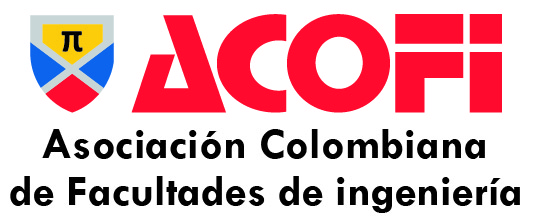Logic in computer science
DOI:
https://doi.org/10.26507/rei.v8n15.233Keywords:
logic, computer science, computing, trainingAbstract
In this paper it is analyzed the need to include the logic in training processes in Computer Science (CS). It is part of a tour of the history of logic in these sciences, later it's described the relationship and the need to include it in the training processes related, and finally analyzed that, when and how deep it should work training CS. This is a revision to issue state and the importance of including this subject in undergraduate and graduate programs in computer sciences and Information Technologies areas.
Downloads
References
Abiteboul, S., Hull, R. & Vianu, V. (1995). Foundations of Databases. USA: Addison-Wesley.
Abramsky, S., Gabbay, D. & Maibaum, T. (1995). Handbook of Logic in Computer Science, vols. 1-4. Oxford: Oxford University Press.
Agostino, M., Gabbay, D., Hähnle, R. & Possega, J. (1999). Handbook of Tableau Methods. London: Kluwer.
Andrews, P. (2002). An Introduction to Mathematical Logic and Type Theory: To Truth Through Proof. New York: Springer.
Barr, A. & Feigenbaum, E. (1981). Handbook of Artificial Intelligence, vols. 3. Stanford: Heuristic Press.
Bergmann, E. & Noll, H. (1977). Mathematische Logik mit Informatik-Anwendungen. Berlin-New York: Springer-Verlag.
Bledsoe, W. & Loveland, D. (1984). Automatic Theorem Proving after 25 years. Providence: American Mathematical Society.
Bolonia (1988). Magna Charta Universitatum. Online: http://www.magna-charta.org /cms/cmspage.aspx?pageUid={d4bd2cba-e26b-499e-80d5-b7a2973d5d97} (Aug. 2012).
Börger, E. (1989). Computability, Complexity, Logic. Amsterdam: North-Holland.
Boyer, R. & Moore, J. (1988). A Computational Logic Handbook. Boston: Academic Press.
Church, A. (1932). A set of Postulates for the Foundation of Logic. Annals of Mathematics, second series, 33, 346-366.
Cliff, B. J. (1980). Software development. A rigorous Approach. New York: Prentice Hall.
Colmerauer, A. (1970). Les systèmes-q ou un formalisme pour analyser et synthétiser des phrases sur ordinateur. Internal publication 43, Département d'informatique de l'Université de Montréal.
CRE (2000). The Bologna Declaration on the European space for higher education: An explanation. Online: http://ec.europa.eu/education/policies/educ/bologna/bologna.pdf, (Jul. 2012)
Davis, M. & Putnam, H. (1960). A Computing Procedure for Quantification Theory. Journal of the ACM, 7(3), pp. 201-215.
Denning, P. (2009). The Profession of It: Beyond Computational thinking. Communications of the ACM, 52(6), 28.
Ebbinghaus, H., Thomas, W. & Flumm, J. (1994). Mathematical Logic. London: Springer.
Fitting, M. (1996). First-Order Logic and Automated Theorem Proving. New York: Spinger-Verlag.
Gabbay, D., Hogger, C. & Robinson, J. (1993). Handbook of Logic in Artificial Intelligence and Logic Programming. Oxford: Oxford University Press.
Gallier, J. (1987). Logic for Computer Science. USA: John Wiley.
Gentzen, G. (1934). Untersuchung Äuber das logische Schliessen. Mathematische Zeitschrift, 39, 176-210.
Goguen, H. & Goubault, J. (2000). Sequent combinators: a Hilbert system for the lambda calculus. Mathematical Structures in Computer Science, 10(1), 1-79.
Goos, G., Hartmanis, J. & van Leuwen, J. (2003). Verification: Theory and Practice. Berlin: Springer.
Herbrand, J. (1968). Logical writings. Holland: Reidel Publishing.
Hilbert, D. (1920). Die Grundlagen Der Elementaren Zahlentheorie. Mathematische Annalen. Traducido al inglés por Ewald W. como The Grounding of Elementary Number Theory, en From Brouwer to Hilbert: The debate on the foundations of mathematics in the 1920’s de Mancosu (ed., 1998), 266-273. New York: Oxford University Press.
Hoare, C. (2004). Communicating Sequential Processes. New York: McGraw Hill.
Hoare, C. & Shepherdson, J. (1985). Mathematical Logic and Programming Languages. USA: Prentice-Hall.
Hoare, C. (1969). An Axiomatic Basis for Computer Programming. Communications of the ACM, 12(10), 576-580.
Huth, M. & Ryan, M. (2004). Logic in Computer Science - Modelling and Reasoning about Systems. Cambridge: Cambridge University Press.
Kowalski, R. (1979). Algorithm = Logic + Control. Communications of the ACM, 22(7), 424-436.
Krantz, S. (2002). Handbook of Logic and Proof Techniques for Computer Science. Boston: Birkhäuser.
Kröger, F. (1987). Temporal Logic of Programs. London: Springer.
Küsters, R. (2001). Non-Standard Inferences in Description Logics. Berlin: Springer-Verlag.
Loeckx, J. & Sieber, K. (1987). The Foundations of Program Verification. London: Wiley.
Manna, Z. & Pnueli, A. (1974). Axiomatic approach to total correctness of programs. Acta Informática, 3(3), 243-264.
Manna, Z. & Waldinger, R. (1971). Toward Automatic Program Synthesis. Communications of the ACM, 14(3), 151-165.
Nerode, A. & Shore, R. (1997). Logic for Applications. New York: Springer-Verlag.
Newell, A. & Simon, H. (1956). The logic theory machine: A complex information processing system. IRE
Transactions on Information Theory, 2(3), 61-79.
Newell, A., Shaw, J. & Simon, H. (1959). Report on a general problem-solving program. Proceedings of the International Conference on Information Processing. Paris, France, 256-264.
Pásztor, K. & Várterész, M. (2003). Mathematical Logic: An Application Oriented Approach. Budapest: Panem Kiadó.
Pnueli, A. (1977). The temporal logic of programs. Proceedings of the 18th Annual Symposium on Foundations of Computer Science. Rhode Island, USA, pp. 46-57.
Qualls, J. & Sherrell, L. (2010). Why computational thinking should be integrated into the curriculum. Journal of Computing Sciences in Colleges, 25(5), 66-71.
Richter, M. (1978). Logikkalküle. Stuttgart: Teubner.
Robinson, J. (1965). A machine-oriented logic based on the resolution principle. Journal of the ACM, 12(1), 23-41.
Russell, B. & Whitehead, A. (1997). Principia Mathematica to *56. USA: Cambridge University Press.
Schönig, U. (1987). Logik für Informatiker, Spektrum Akad. Heildelberg-Berlin-Oxford: Verlag.
Serna, M.E. (2011). Systems engineering for the XXI century: A proposal from the academy. Proceedings Ninth LACCEI Latin American and Caribbean Conference (LACCEI’2011), August 3-5, Medellín, Colombia.
Serna, M.E. (2011a). “Software Engineering” is Engineering. Revista RACCIS, 1(1), 34-43.
Sorbonne (1988). Sorbonne Declaration. Online: http://www.bologna-bergen2005.no/Docs/00-Main_doc/980525SORBONNE_DECLARATION.PDF, (Aug. 2012).
Wing, J. (2008). Five deep questions in computing. Communications of the ACM, 51(1), 58-60.
Downloads
Published
How to Cite
Issue
Section
License
Total or partial reproduction of the documents published in the journal is authorized only when the source and author are cited.
| Article metrics | |
|---|---|
| Abstract views | |
| Galley vies | |
| PDF Views | |
| HTML views | |
| Other views | |









